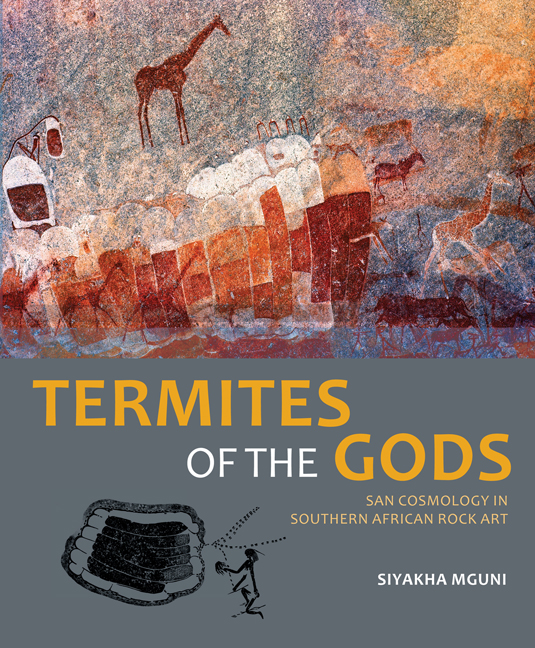Book contents
- Frontmatter
- Dedication
- Contents
- Acknowledgements
- Foreword
- Maps
- Explanatory notes
- Preface: Searching the pasts
- Introduction
- Chapter 1 Ancient mysteries on rocks
- Chapter 2 Meaning in San rock art
- Chapter 3 Tricksters, potency and dance
- Chapter 4 Ways of seeing San rock art
- Chapter 5 Probing deep into formlings
- Chapter 6 Formlings and San cosmological belief
- Chapter 7 Symbolic theatres of San cosmos
- Notes
- List of maps and figures
- Picture credits
- References
- Index
Chapter 7 - Symbolic theatres of San cosmos
Published online by Cambridge University Press: 21 April 2018
- Frontmatter
- Dedication
- Contents
- Acknowledgements
- Foreword
- Maps
- Explanatory notes
- Preface: Searching the pasts
- Introduction
- Chapter 1 Ancient mysteries on rocks
- Chapter 2 Meaning in San rock art
- Chapter 3 Tricksters, potency and dance
- Chapter 4 Ways of seeing San rock art
- Chapter 5 Probing deep into formlings
- Chapter 6 Formlings and San cosmological belief
- Chapter 7 Symbolic theatres of San cosmos
- Notes
- List of maps and figures
- Picture credits
- References
- Index
Summary
At the beginning //Gamá was alone above everything in heaven and the whole sky was the belly of a woman and people just came from the belly of this woman. //Gamá started taking all the people out of a termite's nest.
My journey to uncover the meanings of two painting themes in San rock art led to insights that have eluded writers for a century, and revealed the depth of San spiritual world view and related forms of symbolic expression. However, I was deeply saddened by realising ever more sharply the fact that this long tradition of expressive culture and the hunter-gatherer way of life have disappeared almost completely, except for a few small and circumscribed places in the Kalahari. This unravelling over time of the millennia-old San hunter-gatherer artistic tradition was in part due to the impact of the arrival of populations with competing ways of life and divergent systems of belief. The archaeological, linguistic, historical, rock art and other forms of evidence indicate that the first group of alien cultures came from the northern fringes of the sub-region, around the riverine environs spanning northern Botswana, the southern borders of both Angola and Zambia, and northwestern Zimbabwe. After adopting the herding culture from the north, this Khoekhoen group of click-language speakers introduced the first domestic animals, sheep and cattle, in various parts of southern Africa (ca 2 000 bp). Then a few centuries later (ca 1 600 bp) came the second wave of immigrants from as far afield as the inter-lacustrine environs of the Central African Great Lakes region. These Bantu-speaking populations brought the mixed farming culture, herding animals and growing crops alongside iron smelting and pottery. These groups shared the landscape for at least another millennium with the hunter-gatherers. They introduced diverse cosmological belief systems, economic pursuits and forms of social organisation that permanently dislocated the original San way of life. However, it was the arrival of European settler communities from the mid-1600s onwards that accelerated the decline and caused the eventual demise of the San hunter-gatherer way of life. Along with its expiry, one of the oldest and most remarkable artistic traditions in the world also disappeared.
- Type
- Chapter
- Information
- Termites of the GodsSan cosmology in southern African rock art, pp. 154 - 171Publisher: Wits University PressPrint publication year: 2015



